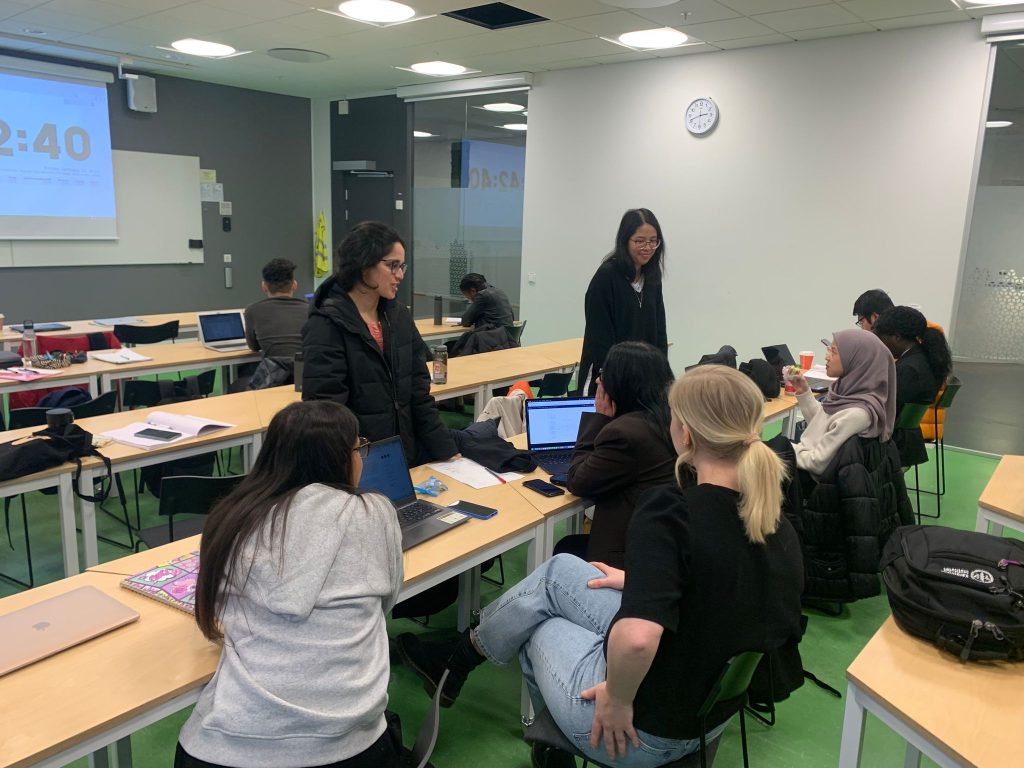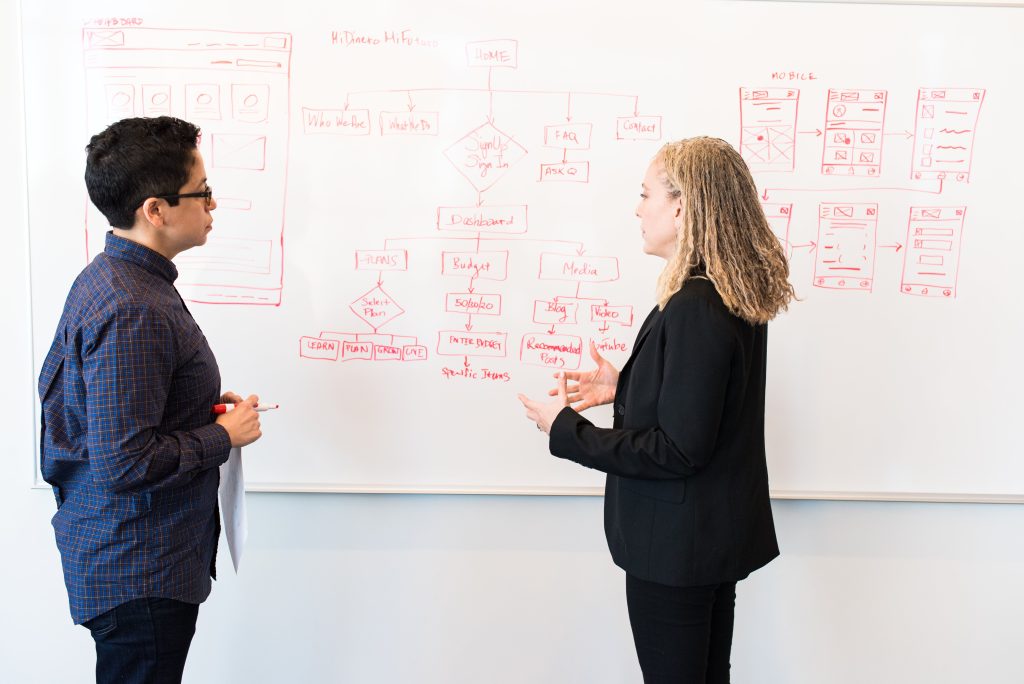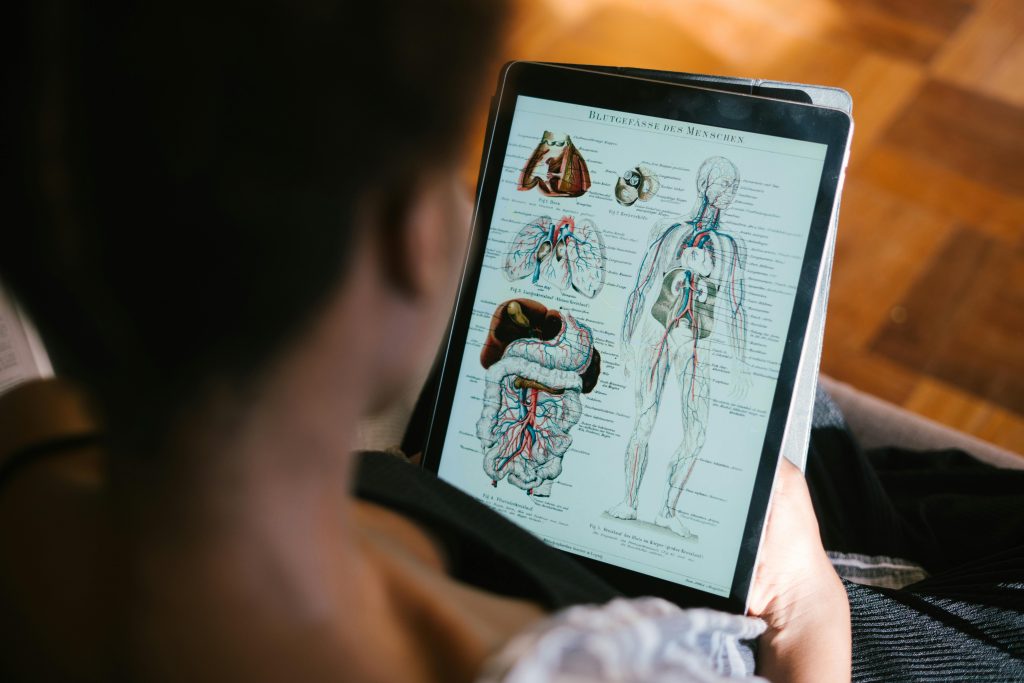
Navigating the first semester’s ups and downs in KI and SU
Time flies! The first semester of our master’s program has come to an end. A lot has happened in the past six months, with ups and downs. Today, I want to take this opportunity to reflect on my personal experiences with the courses I’ve taken at both KI and SU. The Swedish weather and short daytime didn’t make my study here easy, but I must say I am enjoying the joy and inspiration offered by both KI and SU.
Before I go into details about the four courses I took, I would like to share one of the distinctive features of the health informatics curriculum. Courses in health informatics usually last for 4-6 weeks, taking place one after another (sometimes two courses may run parallel to each other). At first, I found this teaching style a bit too intensive, as we were required to master the content of the subject in a short period. However, after the first semester, I do find that it helps me stay focused on one subject at a time. Moreover, the content of the courses is quite practical; we get a lot of assignments and group projects to discuss and practice the knowledge we acquired from class, which facilitates my understanding of the subject. I generally hope that more education systems worldwide will adopt this teaching style, as I have noticed a significant difference in learning.
In the last semester, I took four courses, while others with a medical background took three courses.

The Introduction Course – Health Informatics Need, Objectives, and Limitations
As the first course in the curriculum, this course serves the purpose of providing a basic understanding of health informatics, its importance, and limitations, as well as its application in different healthcare settings. I can vividly remember the course, as it marked the beginning of my journey at KI. The joy of meeting new like-minded acquaintances, the excitement of exploring the new city, and the adrenaline rush of starting a new chapter in my life. One of the highlights of the course is the guest lectures delivered by different external parties. The course coordinator invited various guest speakers, such as alumni, representatives from Folkhälsomyndigheten, and representatives from health technology companies. The topics of presentations varied from job opportunities to applications of health informatics in public health. All these presentations aimed to broaden our vision of health informatics and enrich our understanding of the impact of technology on healthcare services. I found the course to provide a good kick-off for the whole master’s program, as it gave me a better idea of the importance of health informatics and my potential future employment after graduation.
Right after the first course, the whole class was divided into two groups: the medical group and the technical group. Each group took supplementary courses to prepare us for the upcoming courses.

The Second & Third Courses – Essential Medical Science & Health Care Organization and Management
For students with a technical background, there are two supplementary courses focused on medical knowledge and management of the healthcare system in Sweden respectively. Personally, I did not take the final examination for the essential medical science course since I applied for a credit transfer from my previous studies. But from the first few lectures I attended, I would say the course demanded a large amount of time and effort, as the topics covered varied significantly, for example: anatomy, physiology, and biochemistry.
The healthcare organization and management course involved topics like governance and funding of healthcare services, quality assurance of healthcare services, level of care in Sweden, and digitalization of healthcare services. I found this course particularly useful, especially for someone like me who has little to no experience with the operation model of the healthcare system. It is crucial for us to gain insight into the intertwined webs of the healthcare system, as health informaticians seldom work alone; they often have to cooperate with healthcare professionals, managers, and system developers.

Fourth Course – Computer Applications in Health Care and Biomedicine
For the last course in the semester, both groups rejoined again on the Karolinska Institutet Solna campus, and it was good to see the whole class again. This course is a milestone for me since we finally got the opportunity to apply theoretical knowledge to some real-case scenarios! Don’t get me wrong; the course was demanding as it required a lot of group work. Yet, it was still my favorite course of the semester. The course encouraged us to discuss with fellow groupmates so we could learn from each other. At first, I was not used to it, as the discussions often got more confusing. I felt like I had learned nothing from class. However the more I took part in the discussion, the more I managed to grasp the ambiguous concepts covered in the previous courses, which helped me a lot in the individual assignments at the end of the course. Active self-learning seems to be a significant part of the health informatics curriculum. It is tough at the beginning (trust me, I know the feeling), but I am sure this skill set I acquired in this course will bear fruit in future and current courses – and even in my future job.

All in all, last semester served as an introduction to the health informatics discipline. I still have much to learn. The level and the teaching style did give me a surprise, but I gradually adapted to it over time. The new semester is starting now, and it is not going to be easy, yet with proper planning, I hope it will not be THAT hard.

Martin - Health Informatics
I am Martin, 27, currently studying Health Informatics at Karolinska Institutet and Stockholm University. I’m passionate about using data science to improve human well-being. Discovering this programme was a pivotal moment, and I've found it to be one of my best decisions. The programme is enriching my network and perspectives by hosting talks with alumni, government representatives, and startups. An interesting fact about me is that I once aspired to be a curator and artist specializing in Chinese art.
-
Thank you for this piece Martins. It really gave me a better perspective of the course. Im looking forward to getting accepted into the programme this fall.

1 comments